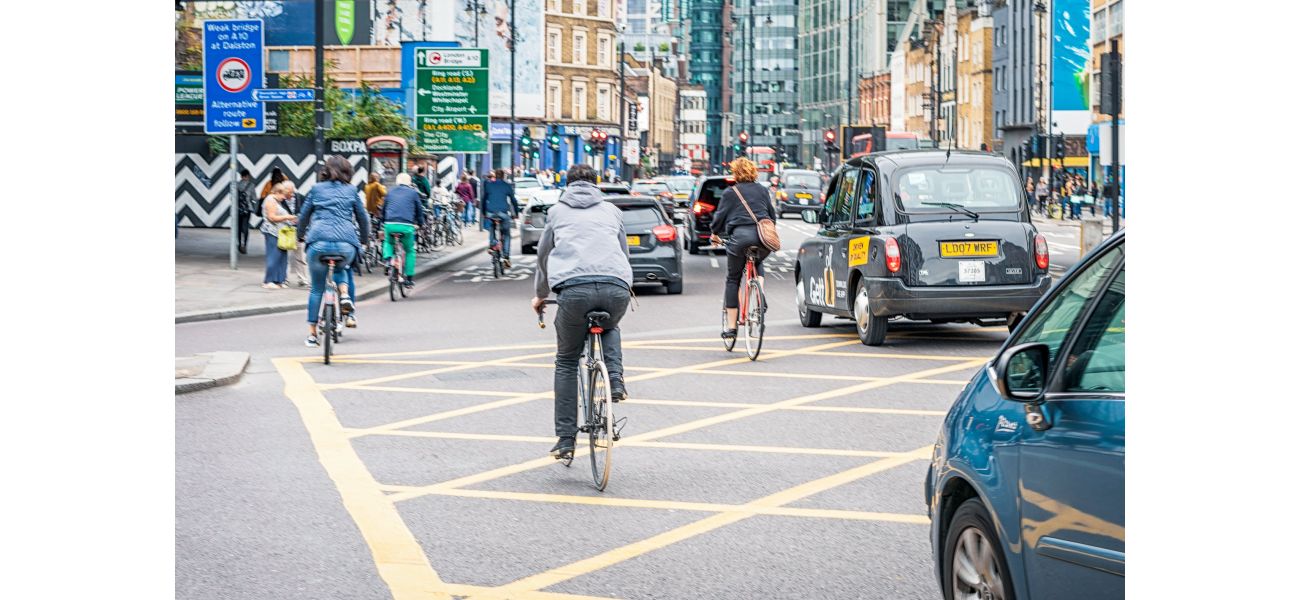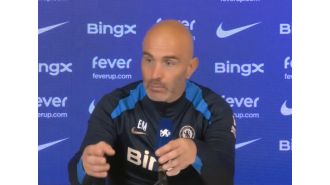London cyclists face danger at specific junctions, as shown in a map.
New info on cyclist and pedestrian fatalities reveals a troubling state of road safety in London.
November 19th 2024.

In the bustling streets of Shoreditch, east London, there is a constant flow of cyclists navigating through traffic. However, recent events have sparked concern among cycling advocates who are pointing fingers at transport authorities and councils for their failure to address the rising number of cyclist and pedestrian deaths. The London Cycling Campaign has conducted a study and identified the most dangerous junctions for vulnerable road users in the city.
Despite an overall decrease in fatalities, the number of cyclist and pedestrian deaths remains a cause for alarm. According to the London Cycling Campaign, Wandsworth council has been named the borough with the most perilous junction for cyclists in the entire city - the Upper Tooting Road cluster in southwest London. Sadly, this is not the first time this junction has been identified as dangerous, and the lack of action from local authorities has been criticized by the cycling community.
The London Cycling Campaign has expressed their disappointment in the Wandsworth council leader for ignoring their pleas to make necessary improvements to these hazardous junctions. They have also called out Transport for London (TfL), London Mayor Sadiq Khan, and other borough leaders for their lack of action and continuous use of empty promises while more families suffer from the consequences.
The campaign group also highlighted the slow progress in addressing these dangerous junctions, stating that it would inevitably lead to the failure of the Mayor's vision to eliminate road deaths in London by 2041. To illustrate the severity of the situation, the London Cycling Campaign has released a list of the top 10 most dangerous junctions in the city, using data from TfL and the emergency services.
At the top of the list for the second year in a row is the Upper Tooting Road, which falls under the responsibility of both TfL and Wandsworth council. The junction has been the site of two serious collisions and six minor crashes in 2023 alone, despite being located along the Cycle Superhighway CS7. According to the campaigners, cyclists using this route face constant danger from vehicles turning across them and the issue of "rat running."
The dangerous reality of these junctions was brought to light when a cyclist was critically injured after being hit by a van driver on Tooting Bec Road. The driver was arrested for causing personal injury by dangerous driving, failing to stop at the scene, and being unfit to drive due to alcohol consumption. Just a day later, another cyclist lost their life at a junction in Putney, Wandsworth, after being struck by a lorry.
Tom Fayes, the chief executive of the London Cycling Campaign, expressed his frustration with the lack of action being taken to improve these junctions. He pointed out that there have been successful trials of safe junction designs using temporary materials, proving that it can be done quickly and cost-effectively. However, the lack of urgency and delay from both boroughs and TfL is concerning, and Fayes questions how many more tragedies will it take for them to take action.
Although the overall number of road deaths in London has decreased, the number of cyclist and pedestrian fatalities has increased. Last year, 49 pedestrians and eight cyclists lost their lives on London's roads. TfL has stated that there has been a 30% decrease in overall road fatalities in London, compared to only 7% in the rest of the UK.
Jenny Yates, Wandsworth's cabinet member for transport, expressed her condolences to the families of the victims and assured that the council has been working closely with TfL to improve safety on these junctions. She added that the council is committed to making cycling a safe and accessible mode of transportation for residents and is constantly seeking feedback and implementing measures to achieve this.
Penny Rees, TfL's Head of Healthy Streets Investment, also expressed their sympathies to the families affected and reaffirmed their commitment to eliminating death and serious injuries on the roads through their Vision Zero initiative. TfL has already completed safety improvements at 45 dangerous junctions and has initiated work at Lambeth and Battersea bridges. The boroughs have also received funding to improve road safety in their local areas.
In conclusion, while there has been progress in reducing road deaths in London, the rising number of cyclist and pedestrian fatalities is a pressing issue that requires immediate action from all parties involved. It is crucial for transport authorities and councils to work together and prioritize the safety of vulnerable road users to achieve the goal of zero road deaths in London.
Despite an overall decrease in fatalities, the number of cyclist and pedestrian deaths remains a cause for alarm. According to the London Cycling Campaign, Wandsworth council has been named the borough with the most perilous junction for cyclists in the entire city - the Upper Tooting Road cluster in southwest London. Sadly, this is not the first time this junction has been identified as dangerous, and the lack of action from local authorities has been criticized by the cycling community.
The London Cycling Campaign has expressed their disappointment in the Wandsworth council leader for ignoring their pleas to make necessary improvements to these hazardous junctions. They have also called out Transport for London (TfL), London Mayor Sadiq Khan, and other borough leaders for their lack of action and continuous use of empty promises while more families suffer from the consequences.
The campaign group also highlighted the slow progress in addressing these dangerous junctions, stating that it would inevitably lead to the failure of the Mayor's vision to eliminate road deaths in London by 2041. To illustrate the severity of the situation, the London Cycling Campaign has released a list of the top 10 most dangerous junctions in the city, using data from TfL and the emergency services.
At the top of the list for the second year in a row is the Upper Tooting Road, which falls under the responsibility of both TfL and Wandsworth council. The junction has been the site of two serious collisions and six minor crashes in 2023 alone, despite being located along the Cycle Superhighway CS7. According to the campaigners, cyclists using this route face constant danger from vehicles turning across them and the issue of "rat running."
The dangerous reality of these junctions was brought to light when a cyclist was critically injured after being hit by a van driver on Tooting Bec Road. The driver was arrested for causing personal injury by dangerous driving, failing to stop at the scene, and being unfit to drive due to alcohol consumption. Just a day later, another cyclist lost their life at a junction in Putney, Wandsworth, after being struck by a lorry.
Tom Fayes, the chief executive of the London Cycling Campaign, expressed his frustration with the lack of action being taken to improve these junctions. He pointed out that there have been successful trials of safe junction designs using temporary materials, proving that it can be done quickly and cost-effectively. However, the lack of urgency and delay from both boroughs and TfL is concerning, and Fayes questions how many more tragedies will it take for them to take action.
Although the overall number of road deaths in London has decreased, the number of cyclist and pedestrian fatalities has increased. Last year, 49 pedestrians and eight cyclists lost their lives on London's roads. TfL has stated that there has been a 30% decrease in overall road fatalities in London, compared to only 7% in the rest of the UK.
Jenny Yates, Wandsworth's cabinet member for transport, expressed her condolences to the families of the victims and assured that the council has been working closely with TfL to improve safety on these junctions. She added that the council is committed to making cycling a safe and accessible mode of transportation for residents and is constantly seeking feedback and implementing measures to achieve this.
Penny Rees, TfL's Head of Healthy Streets Investment, also expressed their sympathies to the families affected and reaffirmed their commitment to eliminating death and serious injuries on the roads through their Vision Zero initiative. TfL has already completed safety improvements at 45 dangerous junctions and has initiated work at Lambeth and Battersea bridges. The boroughs have also received funding to improve road safety in their local areas.
In conclusion, while there has been progress in reducing road deaths in London, the rising number of cyclist and pedestrian fatalities is a pressing issue that requires immediate action from all parties involved. It is crucial for transport authorities and councils to work together and prioritize the safety of vulnerable road users to achieve the goal of zero road deaths in London.
[This article has been trending online recently and has been generated with AI. Your feed is customized.]
[Generative AI is experimental.]
0
0
Submit Comment





